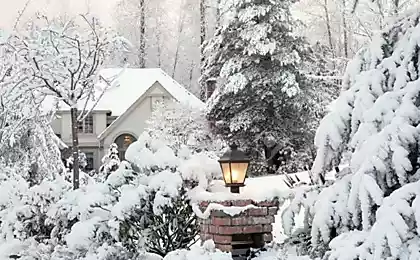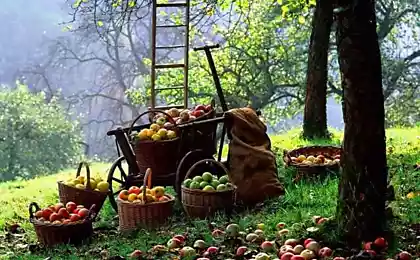453
Compatibility of trees on the site

When planning planting it would be necessary to consider many factors. Unfortunately, not enough to consider only the aesthetic component in the selection of compositions. The difficulty lies in the fact that not all plants do well with each other coexist.
Improper planting, the plot can occur Shakespearean passions — one plant will oppress the other, some species being squeezed just like myself, and others in a neighborhood will bear fruit early.
This subject is very extensive and will be updated, but for now we list some examples of unwanted neighborhood breeds and varieties.
The birch has a strong root system, consuming a lot of water and therefore deprive nearby plants. It is better not to plant it with other shrubs and plants.
Similar properties are spruce and maple, so next to this trio is better to plant shade-loving low-maintenance plants that do not require large amounts of moisture.
The reverse side – these trees are well planted in the soil, which requires drying.
Spruce is a rather strongly acidic soil, so close to her it is better to plant lovers of acid soils. For example, hydrangeas, begonias, Calla lilies, ferns, etc.
Spruce should not be planted near garden beds, berry bushes and fruit trees. But srednekislye soil prefer cherry, gooseberry, Apple. Contraindicated landing next to the lilacs, roses, peonies.
Oak, Linden and maple are combined well with pear and Apple tree. The Apple tree should not be planted near young pines, she burns. Apple and pear does not tolerate near the lilacs, barberry, viburnum, mock orange and roses, but good friends with raspberry, cherry, plum and cherry, especially because their fruits will accelerate the ripening of other plants.
Walnut Manchurian inhibits Apple, amelanchier, pear, Rowan, yew.
Barberry refers to monopolydoc and actively suppresses other plants. But the weeds next to him did not get along. This group includes the locust, horse chestnut, viburnum, rose, fir, lilac, rose. But the yellow is acacia well compatible with horse chestnut.
Ash inhibits the growth of trees and bushes do not grow well near the oak tree.
Cause the exhaustion of the soil, the decaying leaves of chestnut, walnut, pine needles and spruce. This is due to the fact that the leaves of these plants contain phenolic compounds, which are in the process of disintegration begin to break free.
Shrubs are a matter for separate, more in-depth conversation as to seat them correctly to not interfere with each other, a science. Sunny areas will appeal to all plants, which gives blossoming fruit. Red currants should not be planted near raspberries, black currants – near cherry. Lilac and rose should not be planted near Apple and pear. But cherry, plum, raspberry will be good neighbors to each other.
Some plants have very high allelopathic activity (oppression of their own kind), so do not form single-species stands. These include ash, hick, oak, beech, and many conifers. Such plants create around themselves a protective zone. They are oppression of its own undergrowth due to the accumulation of toxic substances, resulting in a view of replacing the itself.
The positive side allelopathic trees – most of them have anti-microbial (anti-bacterial) action, which cleanses and revitalizes the air and provides for the immunity of plants to fungal infections.
All this, however, does not work in 100% of cases because in many ways the compatibility of plants depends on external factors – from the composition of the soil, the degree of illumination, age of trees, and ^ relations. If all this is considered when selecting compositions of plants, all the plants will feel good and create a healthy and well-groomed appearance of the site.published
P. S. And remember, only by changing their consumption — together we change the world! ©
Source: www.pervorod.ru/blogs/eto-interesno/sovmestimost-dereviev-na-uchastke
























